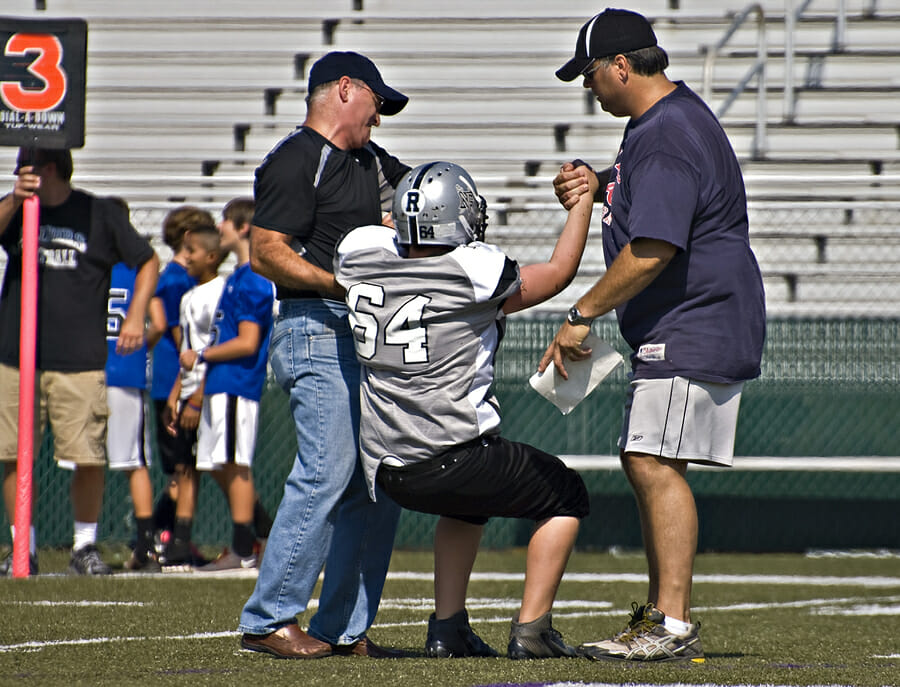With the NFL season starting up again with preseason action with weekend, the continuing discussion on concussions and how to prevent and treat them will inevitably open up once more in full force. Sure, high rates of concussions are seen in other sports like soccer, lacrosse and ice hockey, but far and away the most sports-related concussions occur in football. So in honor of the upcoming NFL season, we at Dynamic Sports Physical Therapy in New York City would like to open the conversation up ourselves with some helpful info and strategies for concussions.
A concussion is a type of traumatic brain injury that results from the brain moving rapidly back and forth or banging against the side of the skull. This sudden movement can stretch and damage brain tissue and trigger a series of harmful changes that may interfere with normal brain activities. About one million traumatic brain injuries are reported every year, but alarmingly, more than half of these occur in youth sports, and football is at the top of the list.
While physical symptoms of a concussion subside within 7-10 days in about 90% of concussions, mental symptoms can last longer for some, and long-term brain damage is always a risk with any serious head injury. Preventing all concussions is a difficult task, but raising awareness and knowing how to identify and respond to a head injury is the smartest way to ensure all measures are being taken to keep kids’ heads safe. Here are some ways you can take charge of confronting concussions:
- Parents and coaches should stress the importance of following the rules in each sport and avoiding any possible chance of direct contact to the head
- Encourage kids to not play through head injuries that might go unnoticed on the sidelines and to report any strange behavior from teammates
- Ensure that helmets and all other protective gear fit properly and are being used appropriately during any sports that require them
- After any blow to the head, the athlete should immediately be evaluated by a trained coach or medical professional; be aware of signs of a concussion like persistent headache, dizziness, nausea or sensitivity to light or noise
- If a concussion is confirmed, stop participation in sports immediately and have a full-scale analysis by a medical professional; the brain is most vulnerable in the first 10 days after a concussion, and in most cases it’s dangerous to return to play during this period of time
- Returning to sports should only occur after a medical professional approves, and these 10 days of recovery or longer may be recommended
Spreading awareness is the #1 tool for preventing and treating concussions in all sports, and many efforts are being put forward in order to accomplish this, including research to analyze head injuries and how they affect the developing brain. Dynamic Sports Physical Therapy in New York City advises you to do your part by taking proper precautions and knowing the signs of a concussion. For more information on concussions or to schedule an appointment for treatment or a post-concussion evaluation, call 212-317-8303.

